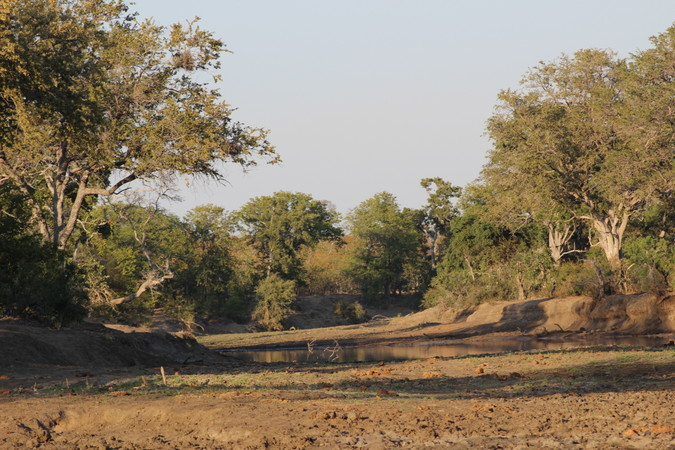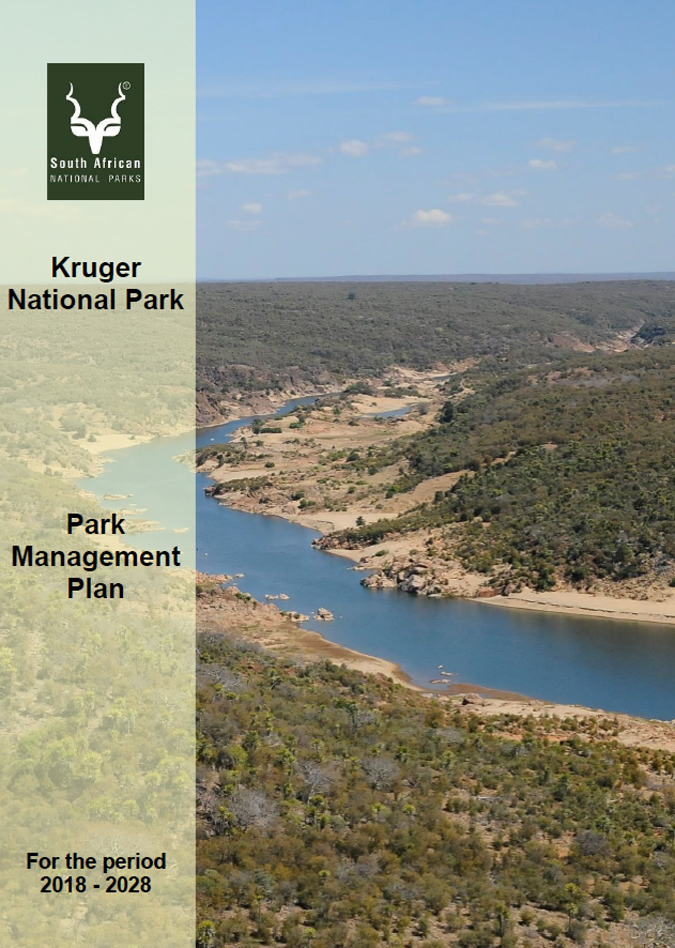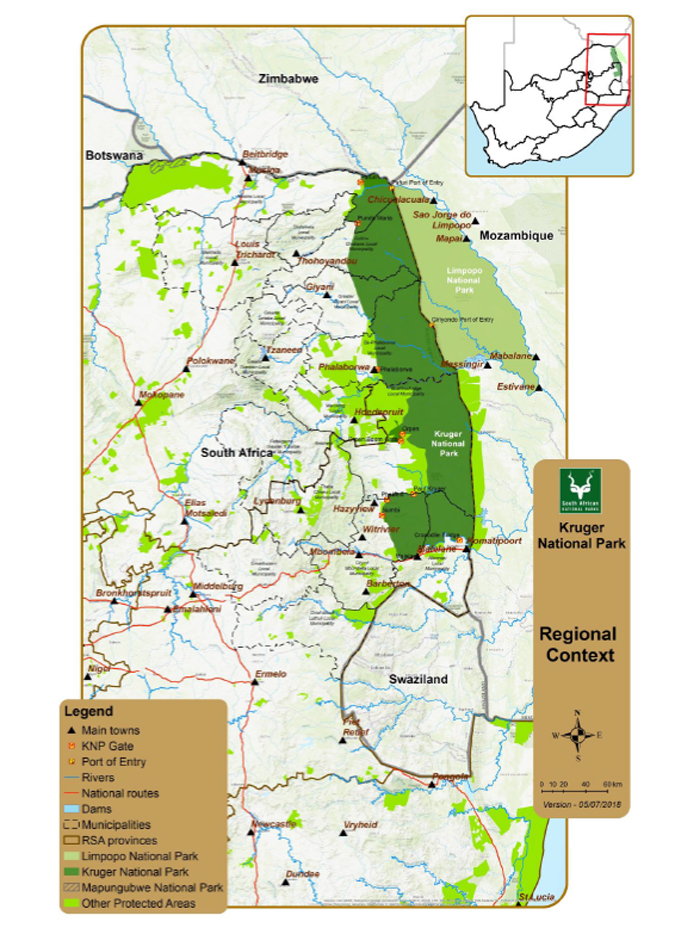
SANParks has released its Kruger National Park management plan covering the next 10 years. This 259-page report is essential reading for Kruger fans who enjoy debating the issues that the Kruger management team has to deal with on a regular basis, such as problem-animal management, hotels in Kruger and trophy hunting of free-roaming wildlife on reserves adjoining Kruger.
Of relevance to this report is the previously-released elephant management plan. Please also read Kruger history and future to better understand Kruger.
THE REPORT
SANParks applies a ‘strategic adaptive management’ when managing Kruger, in order to cater for the various demands and expectations placed on them that reflect the relationships between people and natural landscapes. The various Kruger stakeholders have widely varying or even conflicting expectations of the Kruger, and SANParks has to consult widely in its planning and implementation, encourage public participation and be agile and responsive to changing societal values. In this regard, consider the conflicting views about trophy hunting and the expectations of affected communities living near the park versus those of international tourists. Ultimately though, SANParks has to manage Kruger under the legal framework of South Africa’s Constitution and relevant environmental legislation.

The Kruger mission statement is a good place to begin understanding management focus:
“To conserve, protect and manage biodiversity, wilderness qualities and cultural resources, provide a diverse and responsible visitor experience, contributing towards social, ecological and economic resilience and well-being whilst strengthening constituency within a unique regional landscape”.
The following 12 Kruger ‘vital attributes’ are identified as being central to how Kruger is managed, and the report analyses each in detail:
1. A flagship South African wildlife attraction and iconic local experience;
2. Diverse and unique visitor experiences across a local and international range of conservation-friendly land uses;
3. Catalyst for tourism and economic development in the region;
4. Recognised international brand and global tourism destination for a unique African wildlife experience in a large and safe protected area;
5. Unique location in a diverse regional landscape with multiple land uses;
6. Multiple rivers across the park, promoting biodiversity and regional socio-ecological connectedness;
7. Largely intact biota and ecological processes;
8. One of the last remaining protected areas in South Africa which contains large undeveloped areas contributing to sense of wilderness;
9. Rich and unique natural, historical and cultural heritage;
10. Well-developed infrastructure;
11. Internationally recognised long-term institutional management experience and reputation affording insight and foundations which support management decisions; and
12. Diverse stakeholder relations and co-operative governance.
Aspects of the report that we found particularly interesting include:
1. The zoning of areas in the Kruger as to the intensity of use: wilderness, remote, primitive, low intensity leisure and high intensity leisure.
This exercise serves as a tool to facilitate the wide diversion of user expectations and to facilitate visitor use without unduly compromising biodiversity conservation. According to the report only 18.59% of Kruger is zoned for tourism use (low and high intensity), and these two zones contain the least sensitive areas in the park. The remaining 81.41% is zoned as wilderness, remote and primitive use. The document covers each use zone in detail.
2. The tourism and commercialisation strategy for Kruger, as guided by the zonal plan above. In this regard, the report advises that: “Importantly, a decision has been taken that no further accommodation development (apart from the current and approved future developments) will take place south of the Sabie River.”
3. The inclusion of private and community land into the Greater Kruger and beyond into Zimbabwe and Mozambique – thereby creating a massive area under conservation, with Kruger at the core.
4. The sustainable use of Kruger resources, such as thatching grass, plant seeds and even the meat from culling and problem animal control events.
5. The management of human-wildlife conflict (HWC) and damage-causing animals (DCA), which the report acknowledges as “problematic and …. contentious”.
6. The annual cost of running Kruger – R1,1bn in 2018/2019, the annual revenue shortfall of R247m, and possible options to fund that shortfall
7. There is a very informative series of maps towards the end of the report.
To fully understand Kruger, please read the full Kruger National Park management plan

To comment on this story: Login (or sign up) to our app here - it's a troll-free safe place 🙂.![]()






